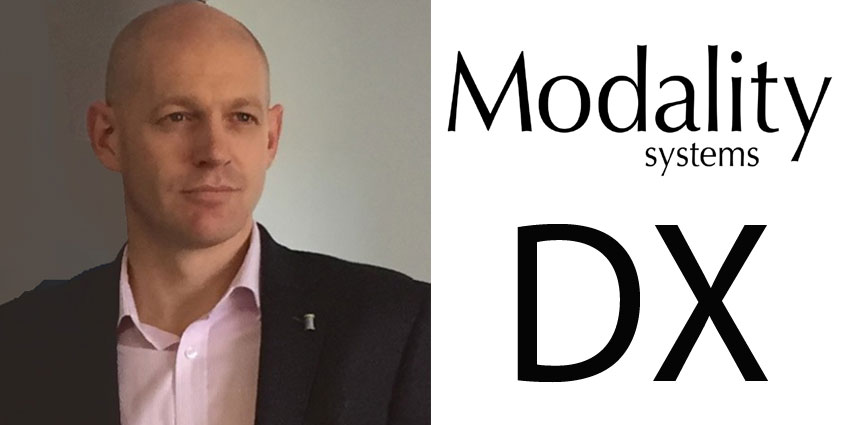The world of business is clearly changing – the question is, are today’s companies ready for the transformation? To discuss the ever-growing list of concerns that businesses have to face in the search for the right communication options, we sat down with Modality Systems co-founder and CEO, James Rodd.
Modality Systems was formed in 2007, and since then, it’s seen tremendous growth in the enterprise. In the beginning, Modality Systems started by explaining to customers what cloud technology, and software-based communications were all about. They developed their consulting practice early on, and by 2014, they had 60 people in their company, no debt, and a global footprint. Modality Systems were acquired by PGi in 2015 and have gradually expanded to help organisations across the world with their Microsoft UC strategies.
How Do you Feel about the Balance Between Communication and Collaboration?
As a company that started off in the very early days of the emerging balance between communication and collaboration, Modality Systems has a lot of insight to offer into the way the world is changing. James noted that in recent years, collaboration has taken more of the focus in the current space – it’s the main topic of conversation. However, you can’t have collaboration if you can’t communicate at the same time.
“A lot of vendors right now are focusing on trying to connect content with communication. There’s this shift of putting the data first and then contextually discussing that information. Our specialty is making sure that once you have the content, you have the context too.”
In terms of whether communication services or collaboration solutions should be presented first, Rodd noted that it really depends what a vendor’s history or background is:
“If you’re a traditional communications player then you’re bound to lead with communications. If you’ve historically been in content and data, then you can lead with collaboration.”
Why is Collaboration so Popular Now?
James acknowledged that collaboration isn’t exactly a new concept, but it has been enhanced, improved, and contextualised in the modern marketplace.
“Today, people are starting to see how context can enhance a user workflow. Our job is to demonstrate how customers can see the ROI from enhancing the experience for their users. Back when we started Modality Systems as a company, the big focus for a lot of companies was presence, and presence is still a major focus today. Presence dictates how you decide to communicate.”
According to James, it’s important for today’s companies to have individual presence access to make their communication decisions.
“Most people are looking for specialists when they want to collaborate over a project. Today, you can use things like bot technology to get a system to direct you to someone with the right skillset. It’s all about making those contextual connections.”
What Are People Asking for With Workflow Systems Today?
The biggest focus for most people investing in collaboration and communication is finding a system that can deliver ROI by enhancing workflows, providing a seamless user experience (UX), and boosting efficiency. I asked James what he considered to be the biggest driving factor for most companies looking at UC&C.
“I think for most cloud platforms; the value comes in the scale and commonality of the platform. Today’s companies want everyone to be on the same system – which is a huge counter to the last iteration of the technology world we had, where IT was an enabler.”
“Today, you don’t deploy a cloud solution – you access and consume it, focusing on user behaviour and how you can add value.”
Do People Today Have an Appetite for Digital Transformation?
One of the trends driving UC&C is the emergence of the “digital workplace” concept. However, as James told me, everyone’s definition of the digital workplace is different. “People need to recognise that digital transformation isn’t a one mode fits all concept. Every company is at a different stage.”
Modality Systems believes that every company is at a different stage in their transformation journey, and they’re all equipped with their own cultures, working styles, and needs. For some people, the move to digital working won’t make as much sense, and that takes us back to the concept of cultural change.
“Every digital transformation process is bespoke. That’s the challenge of choice. While technology today can enable you to do everything, you need to figure out where you’re going to start – and that’s tricky.”
What are the Hurdles to Digital Transformation?
James told me that he feels that there are a lot of different obstacles to overcome on the road to digital transformation (DX) for many companies. Everyone’s trying to rush to catch up to where they think they should be, and that means aligning a host of different areas, including budgets, investment cycles, streams of work, and more.
“People are waiting for the industries, customers, and markets to align everything into something that they can embrace all at once.”
One of the main focuses for companies right now, is the ability to access agility. It seems that if you can be an agile business, then you can achieve the sustainability and profitability that digital transformation can bring. However, according to James, though the technology exists to create agility, people still need to understand how they can implement the right changes to adopt that technology properly.
“To get the best value out of an agile business, just like getting the most value out of digital transformation, companies need to recognise the need for a strong process. It all comes back to understanding how you want the users in your workforce to make a digital change.”
“You need to see what your employees need, then enable the technology they want to empower them, change policies, and facilitate cultural change with the right training and support.”







